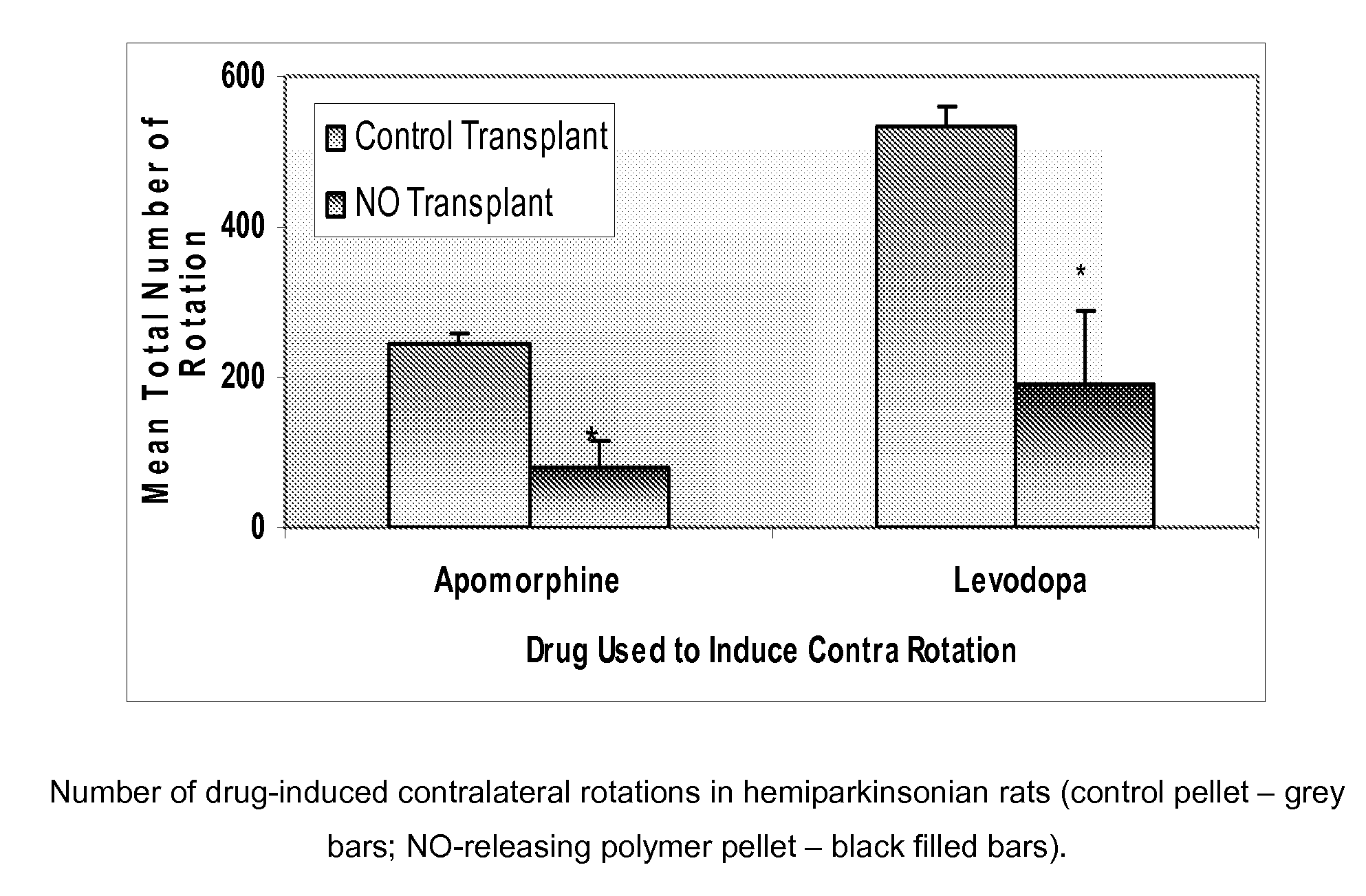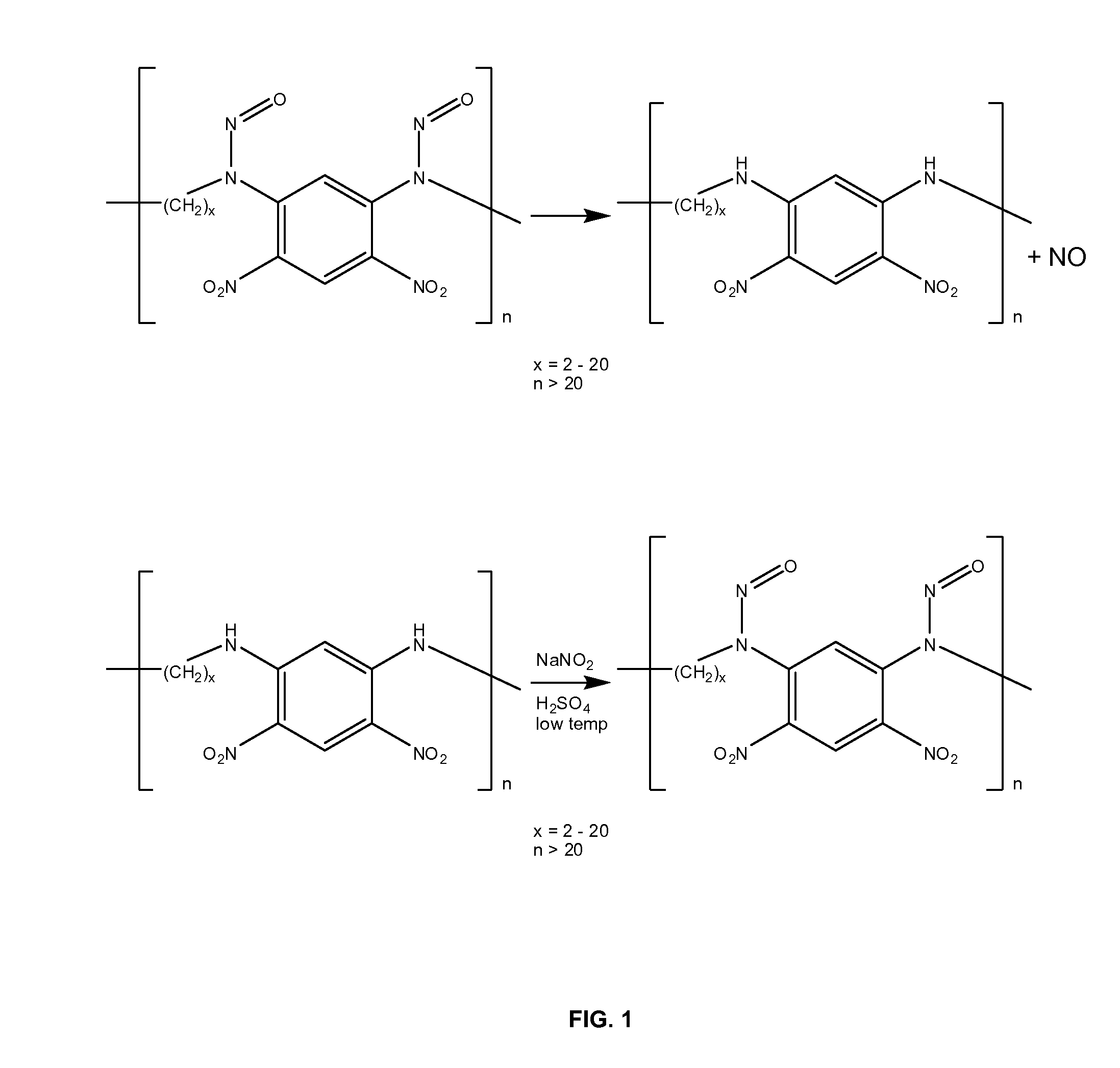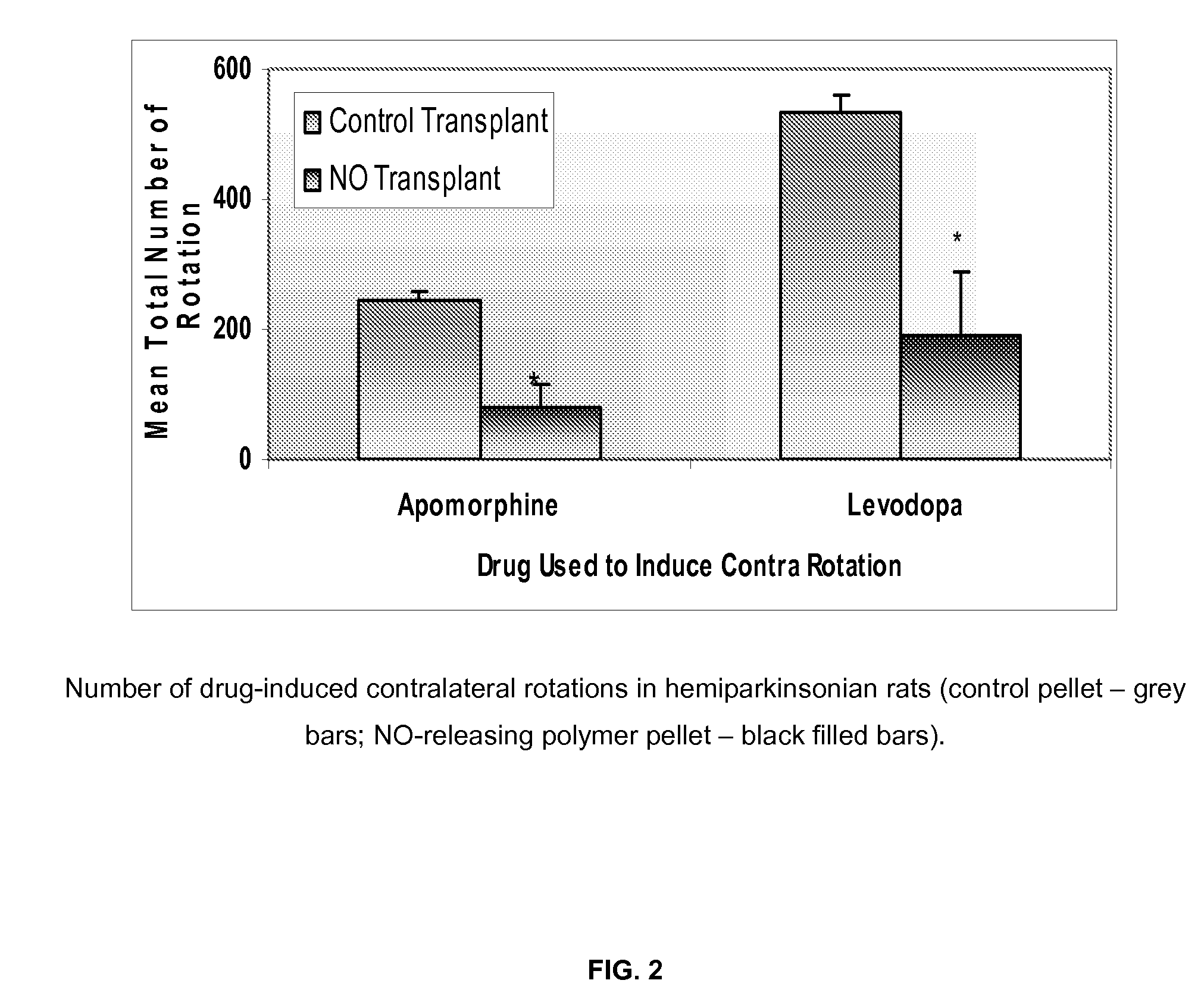Methods of treating disease with nitric oxide (NO)-releasing polymers and soluble no-releasing nitrosamines
a technology of nitric oxide and nitrosamine, which is applied in the field of treating disease with nitric oxide (no)releasing polymers and soluble no-releasing nitrosamines, can solve the problems of no known cause or cure of pd, increased spontaneous movement, and increased striatum dopamine availability,
- Summary
- Abstract
- Description
- Claims
- Application Information
AI Technical Summary
Benefits of technology
Problems solved by technology
Method used
Image
Examples
example 1
General Procedure
[0078]Delivery of the NO-releasing polymers was accomplished by transplantation into the brain of pellets of the polymer or via a dialysis bag containing such pellets. Pellets of NO-releasing polymer of general formula I (x=10) and secondary diamine of general formula II (x=10) (as control) were prepared by mixing 75 parts by weight of NaCl and 25% by weight of polymer. Mixtures were made into pellets using a press.
[0079]The dialysis bag was prepared using cellulose acetate membrane (MW cutoff=100; diameter=10 mm; length=15 mm). Each bag contained various amounts (0.01-1.0 g) of pellet.
[0080]Standard rats, such as Sprague Dawley rats, were utilized and were injected with 6-hydroxydopamine (6-OHDA) to produce Parkinsonian symptoms. The NO polymer pellet or dialysis bag was transplanted subcutaneously. Every week for three weeks post-surgery, animals were administered neurological tests (open field monitor, paw placement and drag) to assess their motor symptoms. The o...
example 2
Study of Polymers in an in vivo Parkinson's Disease Model System
[0082]This study was conducted in accordance with the NIH Guide for the Care and Use of Laboratory Animals. Male Sprague-Dawley rats were housed with free access to food and water, and kept on a 12:12 hours light and dark cycle. The rats were divided into two experimental groups and a control group. Each experimental group consisted of five animals who were housed in pairs. Each animal was weighed routinely. A control group consisted of two animals housed together. These animals were also weighed routinely during the experiment.
[0083]All animals were lesioned with 6-OHDA in amounts of 8.0 μg in 4 μL of saline with 0.02% ascorbate to replicate PD. Injections of the 6-OHDA solution were made into the left medial forebrain bundle (stereotaxic coordinates AP −5.0, L 1.3, V8.0 form the dura mater) while under ketamine cocktail anesthesia (50 mg / kg, IP).
[0084]One experimental group received a subcutaneous transplantation of N...
example 3
Soluble NO Study
[0091]Male Sprague-Dawley rats weighing 200-250 g were housed with free access to food and water. Under sodium pentobarbital anesthesia (50 mg / kg, i.p.), the nigrostriatal pathway was unilaterally lesioned by administering 6-OHDA HCl (8 μg in 4 μL of saline with 0.02% ascorbate) into the left medial forebrain bundle (AP −5.0, L 1.3, V 8.0 from the dura matter). NO transfer into the substantia nigra was achieved by the local intracerebral administration of soluble NO donor of formula (VII) at 0.8, 0.08, or 0.008 μg in triethylene glycol dissolved in phosphate buffered saline at pH 7.4, or an equal volume of vehicles. Rats were anesthetized with pentobarbital (50 mg / kg, i.p.) and placed in a stereotaxic apparatus. NO donor stocks in 4.0 μL of solution or phosphate buffered saline vehicle were delivered by a syringe pump (Hamilton) into the left substantia nigra compacta (ipsilateral to the 6-OHDA lesion) at a rate of 0.5 μL / min for 4 min. After injection, the syringe w...
PUM
| Property | Measurement | Unit |
|---|---|---|
| weight | aaaaa | aaaaa |
| pH | aaaaa | aaaaa |
| body weight | aaaaa | aaaaa |
Abstract
Description
Claims
Application Information
 Login to View More
Login to View More - R&D
- Intellectual Property
- Life Sciences
- Materials
- Tech Scout
- Unparalleled Data Quality
- Higher Quality Content
- 60% Fewer Hallucinations
Browse by: Latest US Patents, China's latest patents, Technical Efficacy Thesaurus, Application Domain, Technology Topic, Popular Technical Reports.
© 2025 PatSnap. All rights reserved.Legal|Privacy policy|Modern Slavery Act Transparency Statement|Sitemap|About US| Contact US: help@patsnap.com



